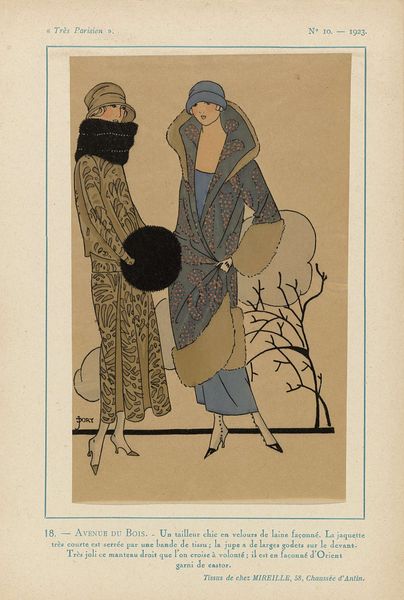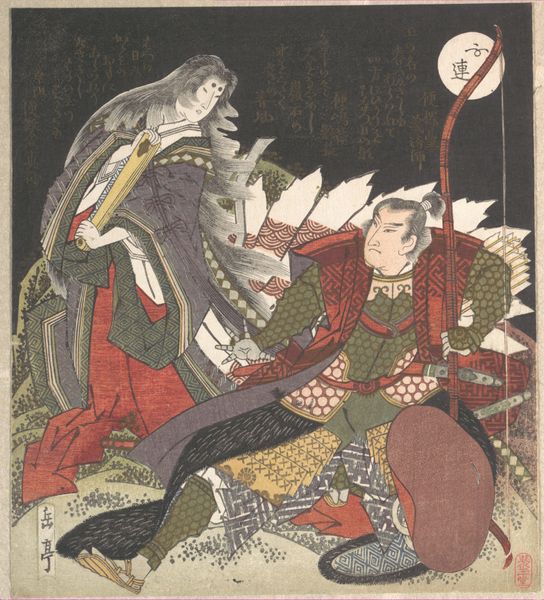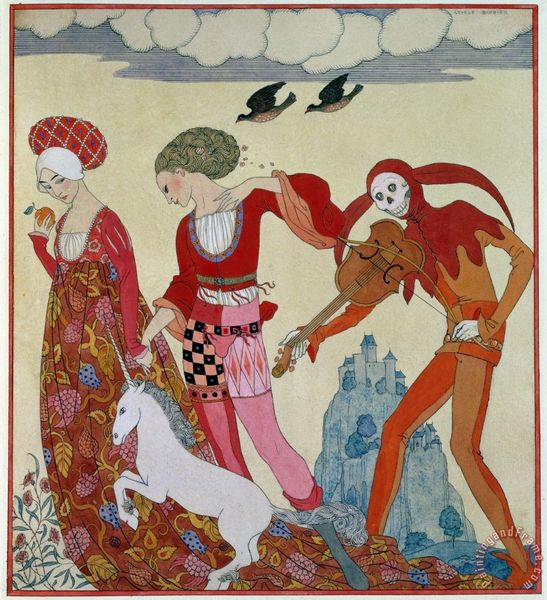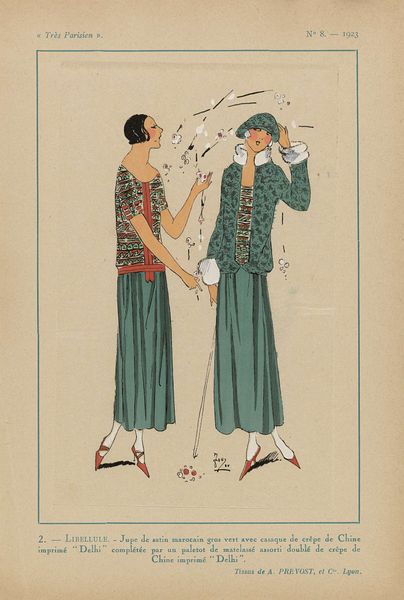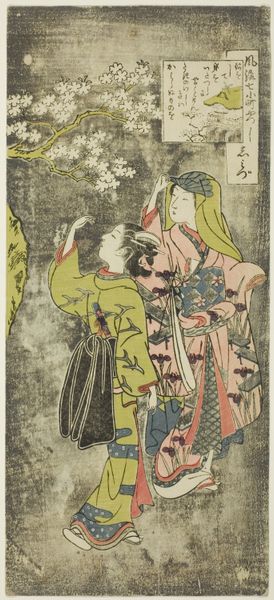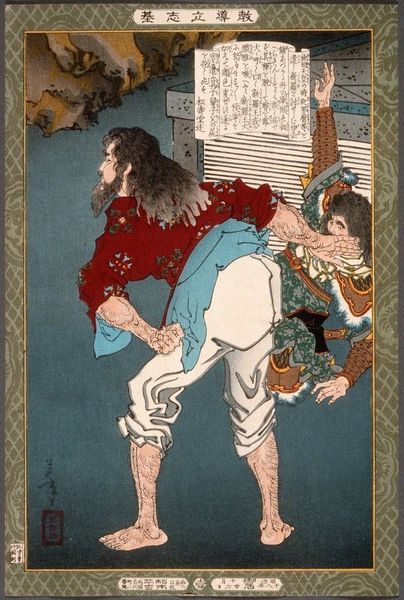
Copyright: Public Domain: Artvee
Curator: This watercolor and tempera piece before us, created in 1929, is titled "Empedocles and Panthea" by George Barbier. The scene almost feels theatrical in its presentation. Editor: Yes, a definite moodiness and feeling of ritual in its symmetrical composition, this indigo sky… paired with soft pastels, it really is intriguing. The characters' features have a touch of that 1920s’ angular aesthetic. It definitely conveys a scene of quiet desperation. Curator: The painting pulls us into an early exploration of identity—of gender and power—especially when situated in the context of Barbier's work, which frequently explores themes of performance. We must question the positioning of Panthea, lying beneath Empedocles. The composition appears ornamental, but look at the undercurrent of submission, both to power and perhaps to desire. Editor: Power definitely resonates. Beyond the regal attire and volcanic symbolism implying earthly force, the presence of the divine female profiles flanking the scene strikes me. Their unwavering gazes evoke archetypes, timeless guardians observing mortality unfold below. Panthea, resting beneath it all, could easily symbolize cyclical time and earth's resilience, mirroring that ever-erupting volcano behind. Curator: It's vital to address how "Empedocles and Panthea" can also be seen as echoing early 20th-century anxieties around societal change. Barbier positions his figures in a landscape that isn’t passively romantic but actively implicated in the emotional dynamics. In an era of rapidly shifting social structures, is Barbier trying to reveal power structures or perhaps question them through visual symbolism? Editor: It is indeed complex, beyond the simply ornamental! Those gazes remind us that certain themes endure beyond historical specificity. Barbier seems intent on capturing the raw emotions associated with the eternal push-and-pull. This watercolor asks us what stories we keep retelling ourselves through our own iconography of yearning, loss, and ultimately, power. Curator: In reflecting on these intertwining threads of desire, submission, and spectacle in Barbier’s piece, it underscores the ever-pertinent dialogues between the self and broader social narratives. Editor: Yes, a subtle reminder that, at its best, symbolic art speaks not only to its immediate context but resonates through ages with archetypal chords, still sounding loudly in us now.
Comments
No comments
Be the first to comment and join the conversation on the ultimate creative platform.
